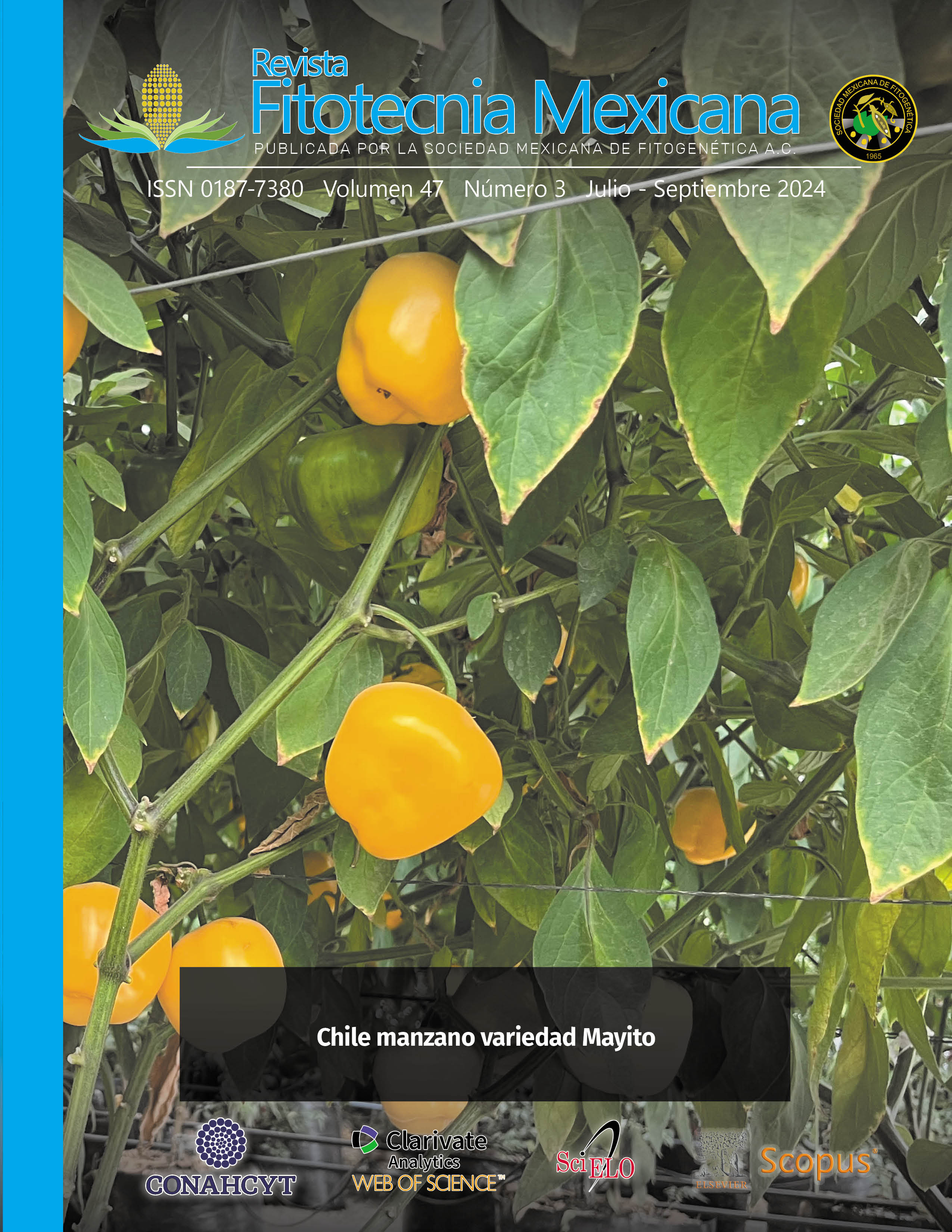CARBON ENRICHMENT ON TOMATO SEEDLINGS TO INCREASE THE NUMBER OF FLOWERS AND FRUITS PER PLANT
Main Article Content
Abstract
Tomato (Solanum lycopersicum L.) is the vegetable most grown under greenhouse conditions. The objective of this study was to promote photosynthesis of tomato seedlings through carbon dioxide enrichment at that stage, which could lead to better growth and subsequently to a higher production of flowers and fruits per plant pruned to the third cluster. Three levels of carbon dioxide (CO2) were tested in tomato seedlings applied from 15 to 35 days after planting. The seedlings, grown in 60-cavity trays, were placed inside a growth chamber of 1 m3 volume. To add CO2, lit candles were used to attain the following concentrations in ppm: natural environment inside the chamber (T1: 420-460), one candle (T2: 500-700), two candles (T3: 700-1000) and out-of-chamber control without candles (T4 = 317-402). A complete randomized blocks experimental design with four replicates was
used. At 30 days after planting (dap), physiological variables were measured, and at 35 days height, stem diameter, leaf area and dry weight of the seedlings. The transplant was done at 35 dds to a density of eight plants m-2. Subsequently, yield and its components were measured. Results indicated that with T2 and T3 treatments the seedlings had greater height, leaf area and
dry matter weight compared to the control, and with T2 treatment the plants produced four more flowers and four more fruits than the control, associated with a greater rate of CO2 assimilation and stomatal conductance in the leaves. It is concluded that carbon enrichment in tomato seedlings promote photosynthesis, and thus, seedlings with transplanting quality are produce and more flowers and fruits per plant.

